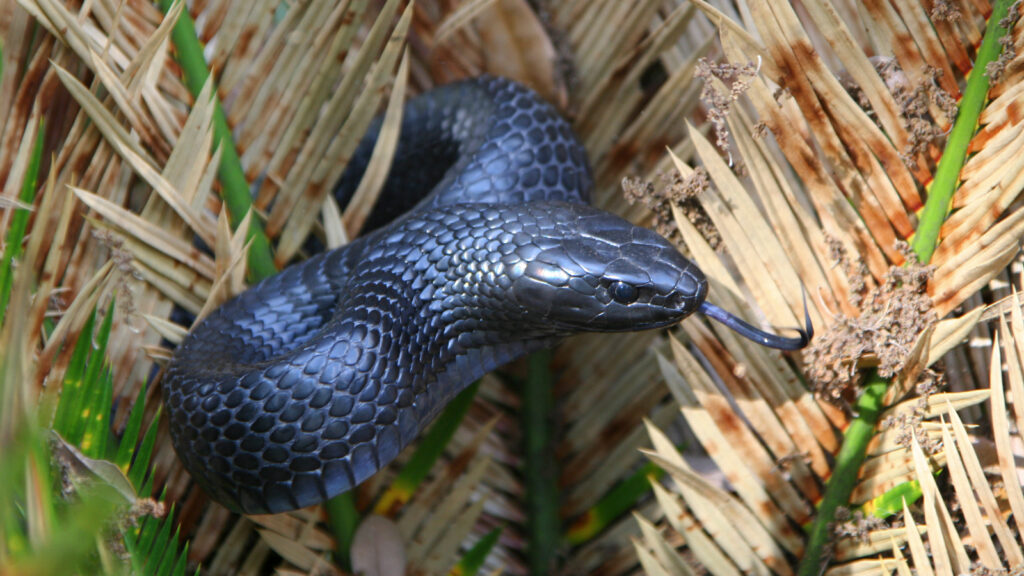iStockphoto / sstaton
Recently, the state of Florida released dozens of endangered snakes into the wild in an effort to restore ecosystem balance in an area that has been overrun by rodents and venomous snakes. The 42 Eastern indigo snakes released are the most the state of Florida has ever sent into the wild in the 9 year of this program to bolster numbers of the once critically endangered species.
Eastern indigo snakes are now classified as a ‘Federally-designated Threatened’ species in Florida and they’re big. They can grow up to 8 feet. Which contributed to their decline which was driven by habitat loss. Big snakes need a lot of area.
To kick this month off the Florida Fish and Wildlife Conservation Commission (MyFWC) working in concert with The Nature Conservancy released these 42 snakes into the wild in the hopes they’ll do what they do: eat other snakes and rodents.
Of course, it’s not just about curbing venomous snakes. This is primarily about balancing the natural ecosystem but that does, of course, entail reintroducing more native snakes to eat the venomous snakes.
Eastern Indigo Snakes in Florida
The 42 snakes released into Apalachicola Bluffs and Ravines Preserve (ABRP) are 2-year-old specimens which were bred and hatched at the Central Florida Zoo & Botanical Gardens’ Orianne Center for Indigo Conservation (OCIC). In a Nature.org press release, they said these snakes spend the first year of their lives at the OCIC before being transferred to the Welaka National Fish Hatchery which sits just inland from the St. John’s River in Satsuma in Central Florida.
Not for nothing, this is a gorgeous species of snake:
One of the many reasons the Eastern indigo snake is a species of notoriety is it lays claim to being the longest snake specie native to North America. Sure, we have 19-foot snakes here in the Florida Everglades but those are invasive snakes and not a native species.
They also, in addition to feeding on rodents, small mammals, birds, frogs, small alligators, etc…They also eat venomous snakes. There isn’t exactly a pressing concern about the number of venomous snakes in Florida at the moment but without this native species in place to keep the ecosystem intact, those numbers can easily skew over a short period of time.
So if you ever are lucky enough to see an Eastern indigo snake in the wild here in Florida, consider yourself fortunate!
Content shared from brobible.com.

